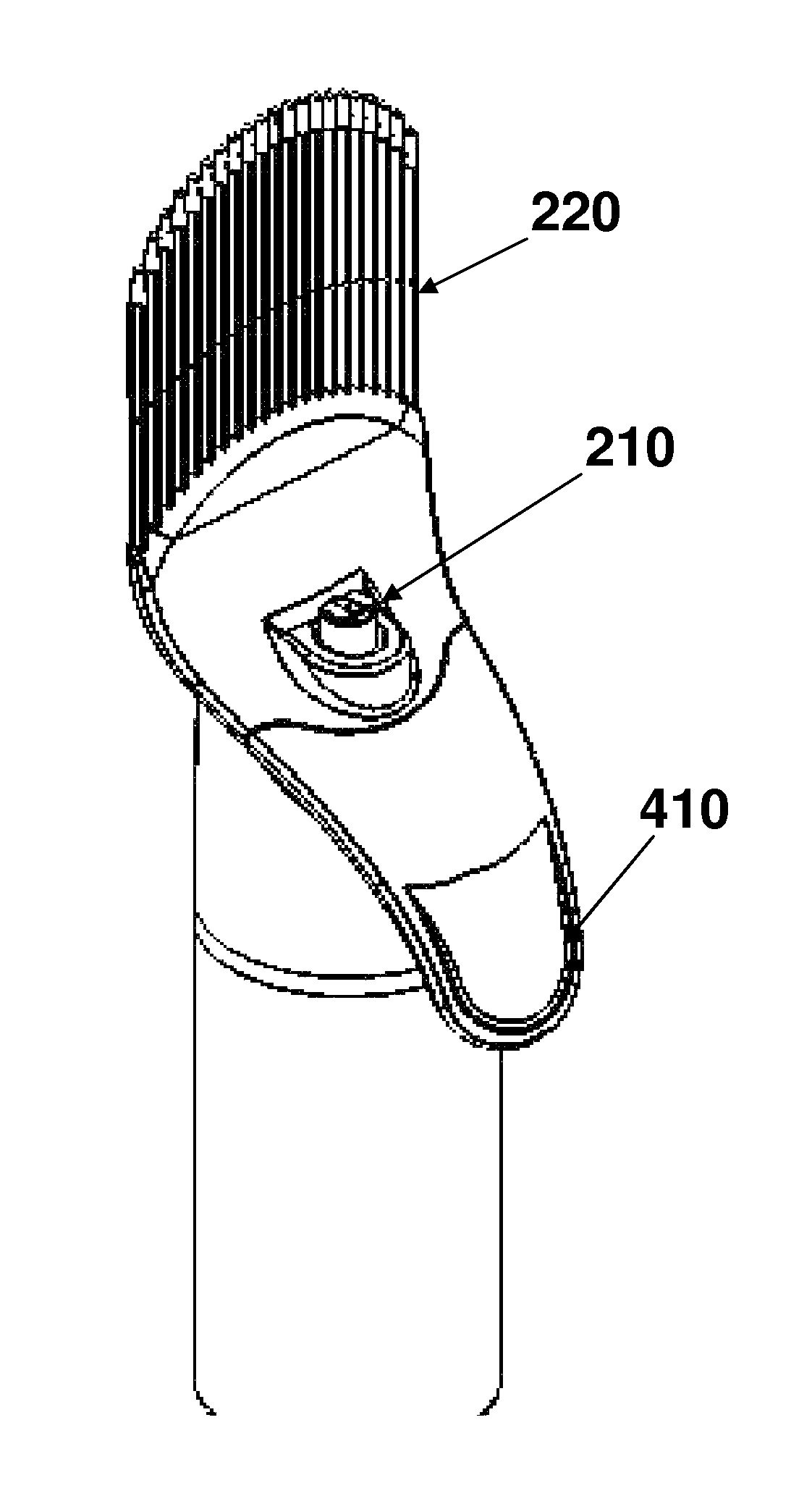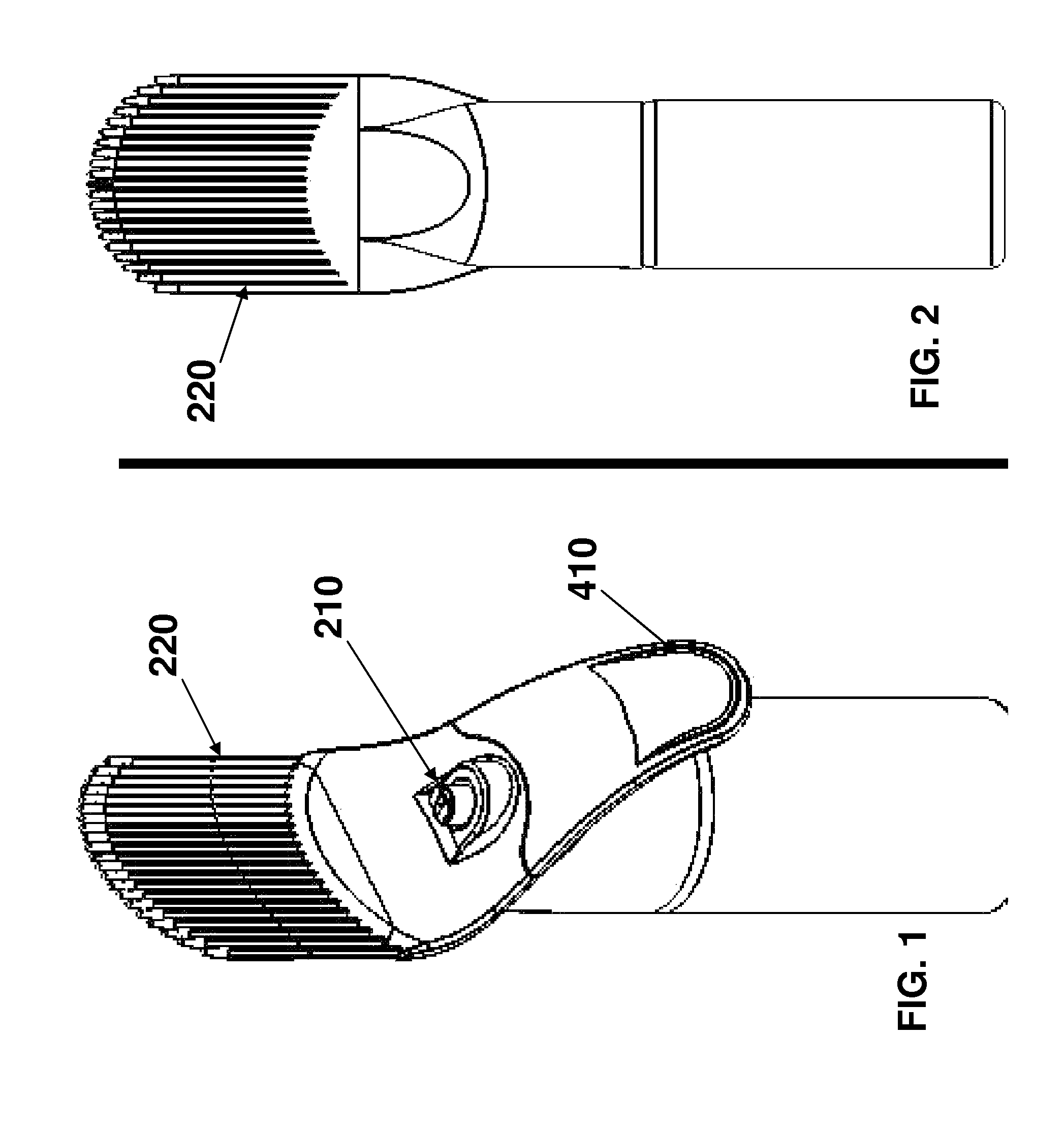Device, kit and method for coloring hair
a technology of hair color and applicator, which is applied in the direction of hair equipment, travel articles, clothes, etc., can solve the problems of not being able to hide the original color of hair color, using potentially harmful reagents, and complex mixing and application of precursors
- Summary
- Abstract
- Description
- Claims
- Application Information
AI Technical Summary
Benefits of technology
Problems solved by technology
Method used
Image
Examples
Embodiment Construction
[0026]The present disclosure describes a hair-coloring applicator device comprising (i) a shield device including an upper surface and a lower surface and (ii) an aerosol assembly for delivering a hair coloring composition or agent onto the upper surface of the shield.
[0027]At any given time, the hair-coloring applicator device may be useful for coloring hair in a specific ‘local treatment region’—for example, at or near the hair line which delineates the border between the user's forehead and a ‘hair mass’ higher on the user's head. For example, rather than using the device to color an entirety or most of his / her hair, the device is especially useful for ‘touching up’ hair roots of visible regions of hair where the hair.
[0028]In one use-scenario, a user colors or dyes a majority of his / her hair from a ‘natural color’ to a ‘target hair color’ using any technique known in the art. At a later time (for example, a few days or few weeks later), the user's hair has grown so that the root...
PUM
 Login to View More
Login to View More Abstract
Description
Claims
Application Information
 Login to View More
Login to View More - R&D Engineer
- R&D Manager
- IP Professional
- Industry Leading Data Capabilities
- Powerful AI technology
- Patent DNA Extraction
Browse by: Latest US Patents, China's latest patents, Technical Efficacy Thesaurus, Application Domain, Technology Topic, Popular Technical Reports.
© 2024 PatSnap. All rights reserved.Legal|Privacy policy|Modern Slavery Act Transparency Statement|Sitemap|About US| Contact US: help@patsnap.com










